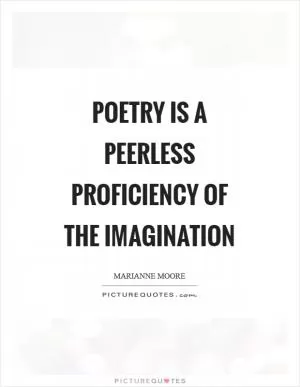That which is impossible to force, it is impossible to hinder

That which is impossible to force, it is impossible to hinder
Marianne Moore, a renowned American modernist poet, often explored themes of nature, art, and the human experience in her work. One of her most famous poems, "The Fish," exemplifies her unique perspective on the world and the idea that true beauty cannot be forced or hindered.In "The Fish," Moore describes the intricate details of a fish caught by a fisherman, highlighting its resilience and beauty despite its captivity. The fish's scales are compared to "medals with their ribbons," emphasizing its strength and endurance in the face of adversity. Moore's vivid imagery and precise language convey the idea that true beauty cannot be controlled or manipulated, but rather exists in its purest form when left to its own devices.
This sentiment is echoed in the phrase, "That which is impossible to force, it is impossible to hinder." Moore believed that true beauty, like the fish in her poem, cannot be forced or hindered by external forces. Just as the fish continues to shine and shimmer in its natural habitat, untouched by the fisherman's attempts to control it, so too does true beauty persist in the face of adversity.
Moore's poetry often celebrates the resilience and strength of the natural world, highlighting the beauty that exists in the unspoiled and uncontrolled. She believed that true artistry lies in capturing the essence of a subject without imposing one's own will upon it. In this way, Moore's work reflects her belief that true beauty cannot be manufactured or manipulated, but rather must be allowed to flourish on its own terms.












 Friendship Quotes
Friendship Quotes Love Quotes
Love Quotes Life Quotes
Life Quotes Funny Quotes
Funny Quotes Motivational Quotes
Motivational Quotes Inspirational Quotes
Inspirational Quotes